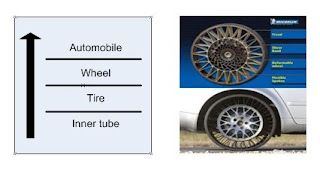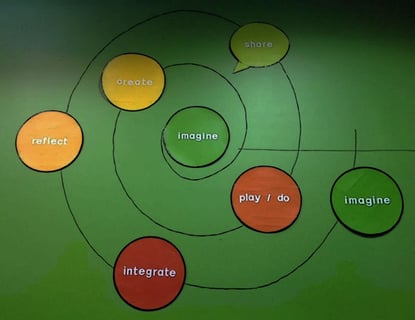The past several weeks I've put out a Thursday or Friday tweet requesting topic suggestions for Brainzooming.
One request last weekend was for a discussion on TRIZ, a topic unfamiliar to me. In a very nice gesture, the original requester, Greg Cimmarrusti from Atlanta, agreed to write a guest post on the topic. Greg's 20-year background includes project management, systems analysis, implementation, and business development within the high tech, manufacturing, real estate, entertainment, and government sectors. His interests include Mind Mapping, Creative Thinking and Organization Techniques.
Greg's post is based in part on a presentation at the Atlanta Creativity Exchange by Jack Hipple, principal of Innovation-TRIZ.com and an authority on the subject:
What is TRIZ? TRIZ is the Russian acronym for “Theory of Inventive Problem Solving.” Soviet engineer and researcher Genrich Altshuller and his colleagues developed the methodology in 1946 and for the next 40 years improved its design. TRIZ is the science of the study of the patterns of problems and solutions. Millions of patents were analyzed to discover patterns that led to breakthrough solutions to specific problems.
The three primary research processes to create TRIZ were as follows:
- Problems and solutions are repeated across industries and sciences. The classification of the contradictions in each problem predicts the creative solutions to that problem.
- Patterns of technical evolution are also repeated across industries and sciences.
- Creative innovations use scientific effects outside the field where they were developed.
TRIZ is based on resolving contradictions and has 40 principles to do so.
Using these known 40 principles (solutions) in new challenges can bring innovative solutions. All innovated creations are purported to be found in the matrix of 40 principles.
One example of TRIZ is the creation of the TWEEL (combination of tire and wheel) and the solution to flat tires. The original tire had an inner tube. Once the inner tube was punctured, the tire was useless until the inner tube was replaced or repaired. This led to the invention of the tubeless tire in use today. Michelin then abstracted this one level up and combined the tire and the wheel. Using a non-inflated tire, the wheel lightly compresses to give a more comfortable ride.
For further information refer to TRIZ40.com, TRIZ-Journal.com, and AITRIZ.org. The matrix of the 40 principles is available for download. There are also general articles on TRIZ and Genrich Altshuller on Wikipedia.com and gizmag.com that provided additional background for this article. -- Greg Cimmarrusti
Thanks Greg for sharing TRIZ with us (and based on the fun headline, I may need to hire you to write headlines for Brainzooming)! And as an added treat, here's a video of Genrich Altshuller teaching TRIZ; you can find more of these on YouTube as well.




